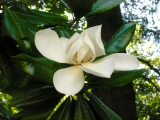China Suppliers > 3W Botanical Extract Inc. > Magnolia Bark plant extract
- Search Product
-
-
- Region :China/Hunan
- Tel : 86-731-82822986
- Fax : 86-731-82938822
- Email :sales@3wbio.com
- URL :www.3wbio.com
- Add :C401, 188 Middle Huanbao, Changsha China
- Details for Magnolia Bark plant extract
-
Magnolia Bark plant extract 472-61-7
Category : Pharmaceuticals and Biochemicals

CAS NO : 472-61-7 EC NO : 207-451-4 MF : C40H52O4 MW : 596.8385 Specification : 2%-5% Astaxanthin Packing : Packed in 40cm*50cm paper-drums and two plastic-bags inside Product description : Product Name Astaxanthin CAS NO. 472-61-7 Molecular formula C40H52O4 Specification 2%-5% (Powder form) (UV), 5% 10% (Oil Form) (UV) Test method HPLC Appearance Brown red fine Powder Brand Name 3W Model Number 3W-AST What is Astaxanthin produced in Hunan 3W Botanical Extract Inc .? Astaxanthin is a carotenoid. It belongs to a larger class of phytochemicals known as terpenes, which are built from five carbon precursors; isopentenyl diphosphate (or IPP) and dimethylallyl diphosphate (or DMAPP). Astaxanthin is classified as a xanthophyll (originally derived from a word meaning "yellow leaves" since yellow plant leaf pigments were the first recognized of the xanthophyll family of carotenoids), but currently employed to describe carotenoid compounds that have oxygen-containing moities, hydroxyl (OH) or ketone (=0), such as zeaxanthin and canthaxanthin. Indeed, astaxanthin is a metabolite of zeaxanthin and/or canthaxanthin, containing both hydroxyl and ketone functional groups. Like many carotenoids, astaxanthin is a colorful, lipid-soluble pigment. This colour is due to the extended chain of conjugated (alternating double and single) double bonds at the centre of the compound. This chain of conjugated double bonds is also responsible for the antioxidant function of astaxanthin (as well as other carotenoids) as it results in a region of decentralized electrons that can be donated to reduce a reactive oxidizing molecule. Astaxanthin is found in microalgae, yeast, salmon, trout, krill, shrimp, crayfish, crustaceans, and the feathers of some birds. It provides the red color of salmon meat and the red color of cooked shellfish. Professor Basil Weedon's group was the first to prove the structure of astaxanthin by synthesis, in 1975 Astaxanthin, unlike several carotenes and one other known carotenoid, is not converted to vitamin A (retinol) in the human body. Like other carotenoids, astaxanthin has self-limited absorption orally and such low toxicity by mouth that no toxic syndrome is known. It is an antioxidant with a slightly lower antioxidant activity in some model systems than other carotenoids. However, in living organisms the free-radical terminating effectiveness of each carotenoid is heavily modified by its lipid solubility, and thus varies with the type of system being protected. While astaxanthin is a natural nutritional component, it can also be used as a food supplement. The supplement is intended for human, animal, and aquaculture consumption. The commercial production of astaxanthin comes from both natural and synthetic sources. Where will Hunan 3W Botanical Extract’s Astaxanthin used to? 1. Astaxanthin is a reddish pigment that belongs to a group of chemicals called carotenoids. It occurs naturally in certain algae and causes the pink or red color in salmon, trout, lobster, shrimp, and other seafood. 2. Astaxanthin is used for treating Alzheimer's disease, Parkinson's disease, “brain attack” (stroke), high cholesterol, and an eye condition called age-related macular degeneration (AMD). It is also used for preventing cancer. 3. Astaxanthin is applied directly to the skin for protection against sunburn. 4. Astaxanthin is an antioxidant. This effect might protect cells from damage. Astaxanthin might also improve the way the immune system functions. Uses : Food & Medical & Comestic Industry Synonyms : Astaxanthin;Natural astaxanthin ;(3S,3'S)-3,3'-dihydroxy-beta,beta-carotene-4,4'-dione;(9cis,9'cis,13cis,13'cis,15cis)-3,3'-dihydroxy-beta,beta-carotene-4,4'-dione; Molecular Structure : 
- Inquire
-
Magnolia Bark plant extract